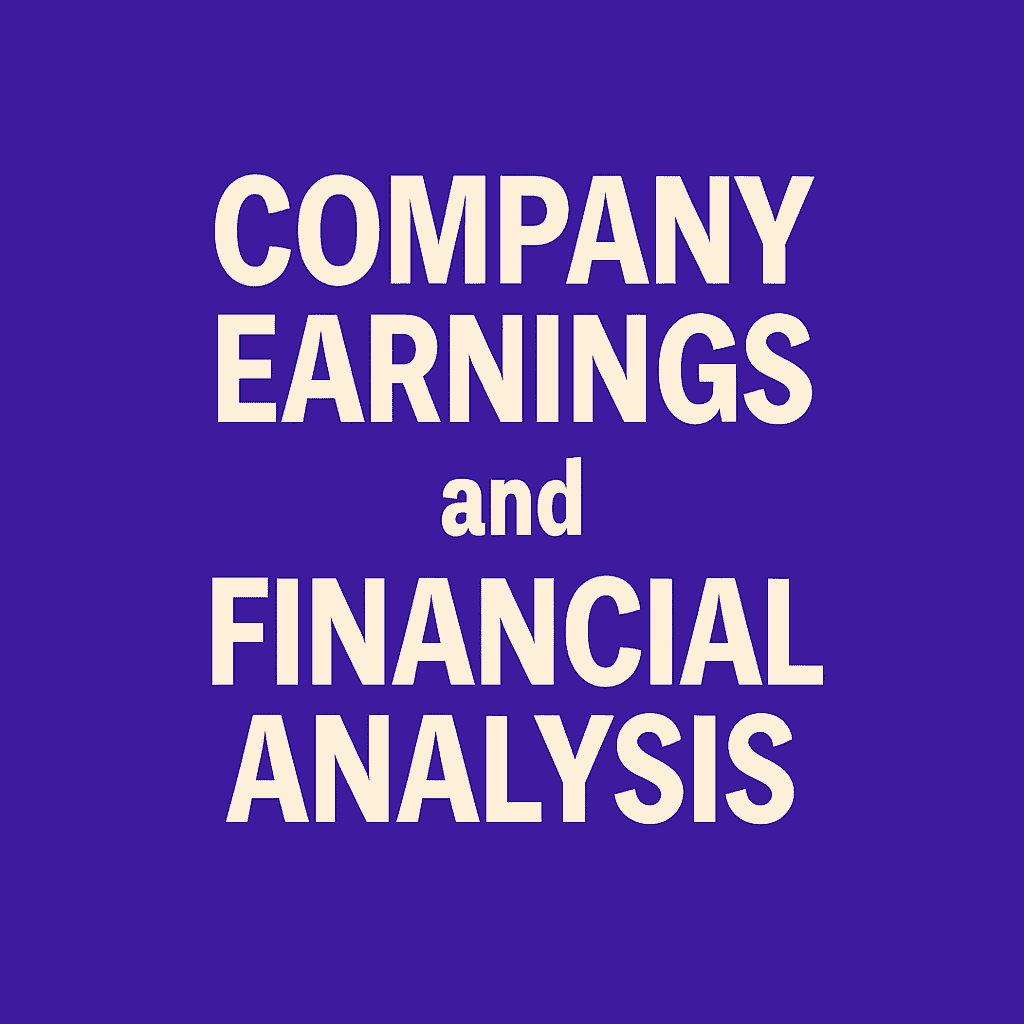JPMorgan Chase & Co. (NYSE: JPM)
Q2 2025 Financial Analysis | July 15, 2025
Executive Summary
JPMorgan Chase delivered another quarter of strong results, reporting net income of $15.0 billion ($5.24 per share), or $14.2 billion ($4.96 per share) excluding a significant tax benefit. The firm demonstrated resilience across all business lines, with total managed revenue of $45.7 billion and a return on common equity of 18%. Markets revenue rose to $8.9 billion (up 15% YoY), while the firm added approximately 500,000 net new checking accounts and continued strong performance in Asset & Wealth Management with client assets crossing over $6.4 trillion.
Q2 2025 Highlights
Financial Performance
JPMorgan Chase reported net income of $15.0 billion in Q2 2025, down 17% year-over-year but up 2% quarter-over-quarter. The current quarter included a significant item: a $774 million income tax benefit driven by the resolution of certain tax audits and the impact of tax regulations finalized in 2024. Excluding this benefit, net income was $14.2 billion, representing an underlying decline of 22% year-over-year.
Managed revenue was $45.7 billion, down 10% year-over-year, primarily due to the absence of the $7.9 billion net gain related to Visa shares that occurred in Q2 2024. Net interest income was $23.3 billion, up 2% year-over-year, while noninterest revenue was $22.4 billion, down 20% year-over-year, largely due to the aforementioned Visa gain comparison.
The firm maintained strong profitability metrics with an ROE of 18% and ROTCE of 21%, though both were down from 23% and 28% respectively in the prior year. The decline was primarily attributable to the challenging year-over-year comparison due to the Visa-related gains in Q2 2024.
Operating leverage remained challenging, with noninterest expense of $23.8 billion essentially flat year-over-year. Excluding the $1.0 billion Visa contribution to the JPMorgan Chase Foundation in the prior year, expenses increased 5%, driven by higher compensation (including revenue-related compensation), technology investments, and growth in front office employees.
Credit costs of $2.8 billion included $2.4 billion of net charge-offs and a $439 million net reserve build. The reserve build was primarily in the wholesale portfolio, driven by net lending activity, largely offset by a decrease in the weight placed on adverse economic scenarios. This compares to $3.1 billion in provision expense in the prior year.
Business Segment Performance
| Business Segment | Net Revenue ($B) | YoY Change | Net Income ($B) | ROE |
|---|---|---|---|---|
| Consumer & Community Banking (CCB) | $18.8 | +6% | $5.2 | 36% |
| Commercial & Investment Bank (CIB) | $19.5 | +9% | $6.7 | 17% |
| Asset & Wealth Management (AWM) | $5.8 | +10% | $1.5 | 36% |
| Corporate | $1.5 | -85% | $1.7 | N/A |
Consumer & Community Banking (CCB) delivered strong results with net income of $5.2 billion (ROE of 36%), up 23% year-over-year. Net revenue increased 6% to $18.8 billion, driven by higher Card Services net interest income on higher revolving balances and higher asset management fees. The firm added approximately 500,000 net new checking accounts and launched a refreshed Sapphire Reserve card with positive early reactions.
Commercial & Investment Bank (CIB) reported net income of $6.7 billion (ROE of 17%), up 13% year-over-year. Net revenue increased 9% to $19.5 billion. Markets revenue was exceptionally strong at $8.9 billion, up 15%, with Fixed Income Markets up 14% and Equity Markets up 15%. Investment Banking fees increased 7% to $2.5 billion, with the firm maintaining its #1 ranking for Global Investment Banking fees with 8.9% wallet share year-to-date.
Asset & Wealth Management (AWM) achieved outstanding performance with net income of $1.5 billion (ROE of 36%), up 17% year-over-year. Net revenue increased 10% to $5.8 billion, driven by growth in management fees on strong net inflows and higher market levels. Assets under management reached $4.3 trillion (up 18% YoY) and client assets crossed over $6.4 trillion (up 19% YoY), with continued net inflows of $80 billion.
Corporate results were significantly impacted by the comparison to the prior year’s Visa-related transactions. Net revenue decreased 85% to $1.5 billion, primarily due to the absence of the $7.9 billion Visa gain. However, the segment benefited from a $774 million income tax benefit related to audit resolutions and regulatory changes, contributing $1.7 billion in net income.
Capital Position & Liquidity
JPMorgan Chase maintained an exceptionally strong capital position, ending the quarter with key regulatory metrics well above required levels:
Capital Strength
- CET1 Capital Ratio: 15.0% (Standardized) and 15.1% (Advanced), both well above regulatory requirements
- Total Loss-Absorbing Capacity: $560 billion, providing substantial buffer for potential losses
- Supplementary Leverage Ratio: 5.9%, well above the 3% minimum requirement
- Basel III CET1 Capital: $284 billion in absolute terms
Liquidity Position
The firm maintained extraordinary liquidity with $1.5 trillion in cash and marketable securities, providing significant flexibility for operations and potential stress scenarios. This includes end-of-period eligible high-quality liquid assets under the liquidity coverage ratio rule.
Capital Distributions
JPMorgan Chase continued robust capital returns to shareholders:
- Common dividend of $3.9 billion or $1.40 per share, representing a 20% cumulative increase compared to Q4 2024
- $7.1 billion in net share repurchases during the quarter
- Net payout ratio over the last twelve months of 71%
- Book value per share increased to $122.51 (up 10% YoY) and tangible book value per share reached $103.40 (up 11% YoY)
The strong capital position enabled the firm to support clients while maintaining conservative buffers. The Board’s decision to increase the dividend for the second time in 2025 demonstrates confidence in the firm’s earnings capacity and capital generation capabilities.
Strategic Outlook & Economic Environment
CEO Jamie Dimon provided insights on the firm’s strategic positioning and economic outlook, highlighting both opportunities and challenges ahead:
Economic Perspective
The U.S. economy remained resilient during the quarter, with several positive factors supporting the outlook. The finalization of tax reform and potential deregulation are viewed as positive developments. However, significant risks persist that require careful monitoring and preparation.
Strategic Priorities
- Client Service Excellence: Continued focus on supporting clients as trusted partners across all business lines
- Technology Investment: Ongoing investments in technology infrastructure and digital capabilities
- Market Leadership: Maintaining leading positions in investment banking, markets, and asset management
- Risk Management: Preparing for a wide range of economic scenarios while maintaining fortress balance sheet principles
Business Line Momentum
Each business line demonstrated strong operational performance during the quarter. The CIB supported clients through volatile market conditions, CCB continued expanding its customer base with innovative products, and AWM achieved record client asset levels with continued net inflows.
The firm’s diversified business model and strong capital position provide resilience and flexibility to navigate various economic environments while continuing to serve clients and communities effectively.
Credit Quality & Risk Management
JPMorgan Chase maintained disciplined risk management practices while supporting client needs across economic cycles:
Credit Performance Metrics
- Provision for Credit Losses: $2.8 billion, down from $3.1 billion in the prior year
- Net Charge-offs: $2.4 billion, up $179 million year-over-year, predominantly in Card Services
- Net Reserve Build: $439 million, primarily in Wholesale, driven by net lending activity
- Card Services NCO Rate: 3.40%, reflecting normalized credit trends
Portfolio Quality
The firm’s loan portfolio totaled $1.4 trillion on average, up 5% year-over-year and 3% quarter-over-quarter. Credit quality remained within expected ranges across business lines, with the firm maintaining conservative underwriting standards and robust risk management frameworks.
The reserve build in the Wholesale portfolio primarily reflected the impact of net lending activity and credit quality changes on certain exposures, partially offset by a decrease in the weight placed on adverse economic scenarios in the firm’s stress testing models.
Risk Management Philosophy
JPMorgan Chase continues to adhere to its fortress balance sheet principles, maintaining strong capital and liquidity buffers to weather potential economic uncertainties. The firm prepares for a wide range of scenarios while supporting client needs and maintaining appropriate risk-adjusted returns.
Risks & Opportunities
Opportunities
Risks
Conclusion
Strengths
- Strong net income of $15.0 billion with resilient business performance
- Exceptional capital position with 15.0% CET1 ratio well above requirements
- Outstanding liquidity with $1.5 trillion in cash and marketable securities
- Market-leading positions across investment banking and markets
- Continued growth in customer base and asset management flows
- Robust capital returns with dividend increases and share repurchases
Key Considerations
- Year-over-year revenue decline primarily due to prior year Visa gains
- Credit normalization continuing, particularly in Card Services
- Economic uncertainties requiring continued risk management focus
- Expense growth from technology investments and compensation
- Geopolitical risks potentially affecting market conditions
- Interest rate environment impacts on net interest income
Summary
JPMorgan Chase delivered another quarter of strong results in Q2 2025, demonstrating the resilience and diversification of its business model. While net income of $15.0 billion was down 17% year-over-year, this decline was primarily due to the challenging comparison with the prior year’s Visa-related gains. Excluding significant items, the firm’s underlying performance remained robust across all business lines.
The firm’s fortress balance sheet principles continue to serve it well, with exceptional capital ratios of 15.0% CET1 and $1.5 trillion in liquidity providing substantial buffers against potential economic uncertainties. The 20% cumulative dividend increase and $7.1 billion in share repurchases demonstrate management’s confidence in the firm’s earnings capacity and capital generation capabilities.
Each business segment performed well, with CCB adding 500,000 new checking accounts, CIB maintaining market leadership in investment banking and delivering strong markets revenue, and AWM achieving record client asset levels with continued strong inflows. This diversification provides stability and growth opportunities across different market conditions.
Looking ahead, while CEO Jamie Dimon acknowledges significant risks including trade uncertainty, geopolitical tensions, and elevated asset prices, the firm’s strong positioning, conservative risk management, and substantial capital and liquidity buffers provide confidence in its ability to navigate various economic scenarios while continuing to serve clients and communities effectively.



